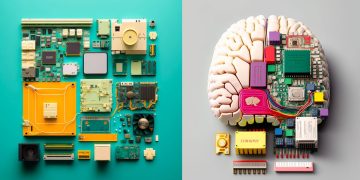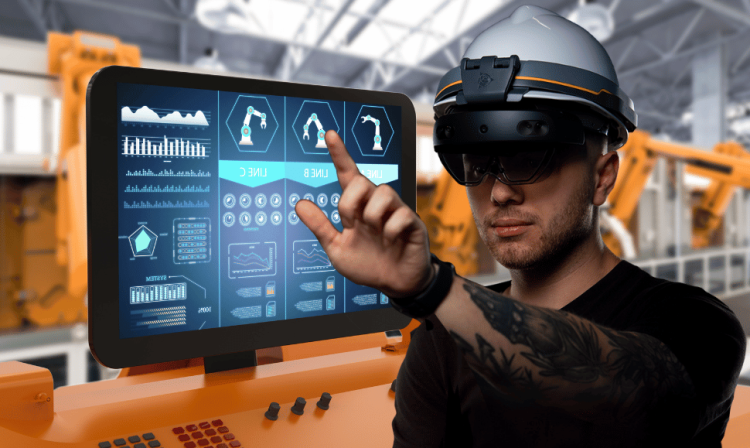Augmented Reality (AR) is rapidly transforming the way we experience the world, blending digital content with our physical environment. From interactive gaming to industrial applications, AR has made significant strides, but the vision of a truly fully immersive AR world—one where the digital and physical realms are seamlessly integrated—is still just beyond the horizon. However, with advancements in technology, a growing number of companies and researchers are racing to make this vision a reality.
In this article, we explore the latest advancements in AR technology, the efforts being made to build fully immersive AR experiences, and the challenges that lie ahead.
1. What is Augmented Reality (AR)?
Augmented Reality (AR) is the technology that overlays digital information (such as images, sounds, or other sensory stimuli) onto the real world in real-time. Unlike Virtual Reality (VR), which creates a completely immersive digital environment, AR enhances the physical world with digital elements, allowing users to interact with both the real and virtual worlds simultaneously.
AR technology typically uses devices such as smartphones, AR glasses, or headsets to project digital content into the user’s view. The most common examples include games like Pokémon Go, which use GPS and camera technology to place virtual objects into the real world, and Apple’s ARKit and Google’s ARCore, which enable developers to create AR apps for mobile devices.
The next step in AR evolution is the development of fully immersive AR experiences, where the virtual and physical worlds are indistinguishable, creating a truly seamless integration between the two.
2. Technologies Driving the Race for Fully Immersive AR
Building a truly immersive AR world involves the convergence of multiple advanced technologies. Several key innovations are pushing the boundaries of what AR can achieve:
1. Advanced AR Glasses and Wearables
For a fully immersive AR experience, the technology must be more seamless and less intrusive than current options. Traditional AR systems rely on smartphones or tablets to display digital content. While effective, these devices are limited by their size and the need to hold them. The next generation of AR experiences will require wearable devices, such as AR glasses or headsets, which allow users to interact with digital content without the need for handheld screens.
Several companies are currently working on AR glasses that could provide a more natural, hands-free experience. Microsoft’s HoloLens 2, for example, is one of the most advanced AR headsets on the market, offering spatial computing capabilities that allow users to interact with digital elements in real-world spaces. However, these devices are still bulky, expensive, and not fully consumer-ready.
Apple has also made waves in the AR space, with rumors circulating about its upcoming AR glasses, which are expected to be lighter, more comfortable, and integrate with the wider Apple ecosystem. These glasses could make AR experiences more practical and accessible, bringing the dream of a fully immersive AR world closer to reality.
2. Computer Vision and Simultaneous Localization and Mapping (SLAM)
Computer vision plays a crucial role in AR by enabling devices to perceive and understand the user’s environment. By using cameras and sensors, AR systems can detect real-world objects, recognize their position in space, and map the surroundings. This ability to “see” the world is critical for ensuring that digital content is accurately placed and interacts with the physical environment in real-time.
Simultaneous Localization and Mapping (SLAM) is another technology that allows AR devices to track their position within a physical space while simultaneously building a map of that environment. SLAM enables more precise placement of digital elements, ensuring that virtual objects appear stable and fixed in the real world, even as the user moves around.
These technologies are critical for creating the immersive, dynamic AR experiences that will eventually blend the physical and digital worlds seamlessly.
3. 5G Connectivity and Cloud Computing
To achieve fully immersive AR, fast and reliable data transmission is essential. 5G connectivity offers incredibly low latency and high bandwidth, enabling AR devices to stream high-resolution, interactive content in real-time without delays. With 5G, AR can be delivered with much faster response times, which is crucial for creating a seamless experience in dynamic, real-time environments.
Cloud computing also plays a major role in AR development, allowing complex AR applications to be offloaded to the cloud rather than processed on-device. This reduces the need for powerful hardware on the user’s end and enables real-time access to large datasets, such as 3D models and detailed environmental information. With cloud-powered AR, users can enjoy richer, more detailed experiences without needing specialized or expensive hardware.
4. Artificial Intelligence (AI) and Machine Learning
The integration of AI and machine learning can enhance AR experiences by improving object recognition, gesture control, and predictive analytics. AI can help AR devices understand and anticipate user behavior, offering more personalized and context-aware experiences. For example, AI-powered AR systems can recognize objects in a user’s environment, automatically adjusting the virtual content accordingly.
Machine learning also helps improve AR’s ability to understand dynamic environments and adapt to changing conditions. For instance, AI could allow AR glasses to automatically adjust brightness, contrast, or content display based on ambient lighting or user preferences, creating a more intuitive and immersive experience.

3. Key Players in the Race to Build Immersive AR Worlds
Several tech companies, both established giants and new startups, are at the forefront of developing fully immersive AR systems. Their work is pushing the boundaries of what is possible and driving innovation in the AR space.
1. Microsoft
Microsoft’s HoloLens 2 is one of the most notable examples of AR technology aimed at creating immersive experiences. The HoloLens 2 features advanced eye-tracking, hand gestures, and spatial audio, allowing for a more natural and interactive experience. Its primary focus has been on industrial, healthcare, and enterprise use cases, but the technology is being refined to potentially support consumer applications in the future.
2. Apple
Apple has made significant investments in AR, and its upcoming AR glasses are one of the most highly anticipated devices in the AR space. Apple’s ARKit, a software framework for building AR applications on iOS devices, has already made AR experiences accessible to millions of users. With its vast ecosystem, Apple is poised to lead the charge in creating more consumer-friendly, fully immersive AR experiences.
3. Google
Google was an early pioneer in the AR space with its Google Glass, though the device faced criticism for its intrusive nature and limited capabilities. However, Google has continued to invest in AR with its ARCore platform, which allows developers to build AR applications for Android. Google’s long-term plans for AR likely involve deeper integration with its existing products, such as Google Maps, Google Assistant, and its suite of cloud services.
4. Facebook (Meta)
Facebook, now Meta, has shifted its focus toward building the metaverse, a fully immersive virtual world that will likely include extensive AR components. Meta’s Oculus VR headset has been a major player in the virtual reality space, and the company’s efforts to build a fully immersive AR system are expected to push the boundaries of how users interact with both the digital and physical worlds.
Meta has also invested in smart glasses in partnership with Ray-Ban, offering a glimpse into the future of AR wearables that blend seamlessly with everyday life. Meta’s massive investment in AR and VR is indicative of its long-term vision to integrate these technologies into everyday life.
4. Challenges in Building a Fully Immersive AR World
While progress in AR technology is promising, there are several technical, social, and economic challenges that must be overcome before fully immersive AR worlds become mainstream.
1. Hardware Limitations
Current AR glasses and headsets are bulky, uncomfortable, and often expensive. For AR to become truly immersive, devices must be lightweight, stylish, and affordable. They must also feature long-lasting battery life, comfortable wearability, and reliable performance to be viable for daily use.
2. Environmental Understanding
Creating AR experiences that accurately reflect the real world requires sophisticated sensors, computer vision, and real-time environmental mapping. For AR content to blend seamlessly with the real world, the system must constantly track and understand the user’s environment. This requires the development of advanced algorithms and AI to manage complex, dynamic environments.
3. Privacy Concerns
AR systems that constantly collect data about the user’s environment could raise privacy concerns. For instance, AR glasses with cameras or sensors could be used to record conversations or observe personal activities without consent. Balancing user privacy with the need for data collection will be an ongoing challenge.
4. Ethical and Social Impacts
As AR becomes more immersive, there are concerns about its potential effects on human behavior, relationships, and social dynamics. For example, how will we navigate the boundaries between the real world and virtual overlays? Will AR create new forms of addiction, isolation, or inequality? These are questions that developers, policymakers, and society must address as AR technologies evolve.
5. The Future of Immersive AR Worlds
The race to build a fully immersive AR world is well underway, and the next few years promise to bring exciting advancements. With continuous improvements in hardware, software, and connectivity, we may soon see AR systems that integrate seamlessly into our daily lives, transforming how we work, socialize, shop, and entertain ourselves.
However, challenges remain in creating a truly immersive, seamless experience. The future of AR will require a careful balance of innovation, ethics, and user experience to ensure that this powerful technology benefits society while avoiding potential pitfalls.
















































Discussion about this post